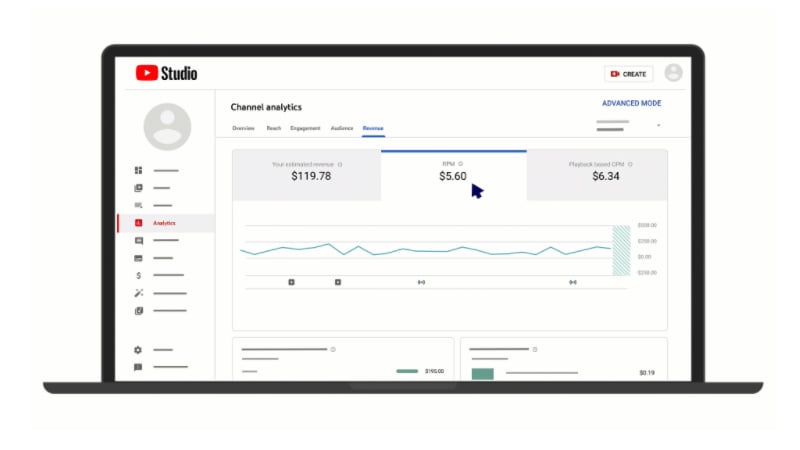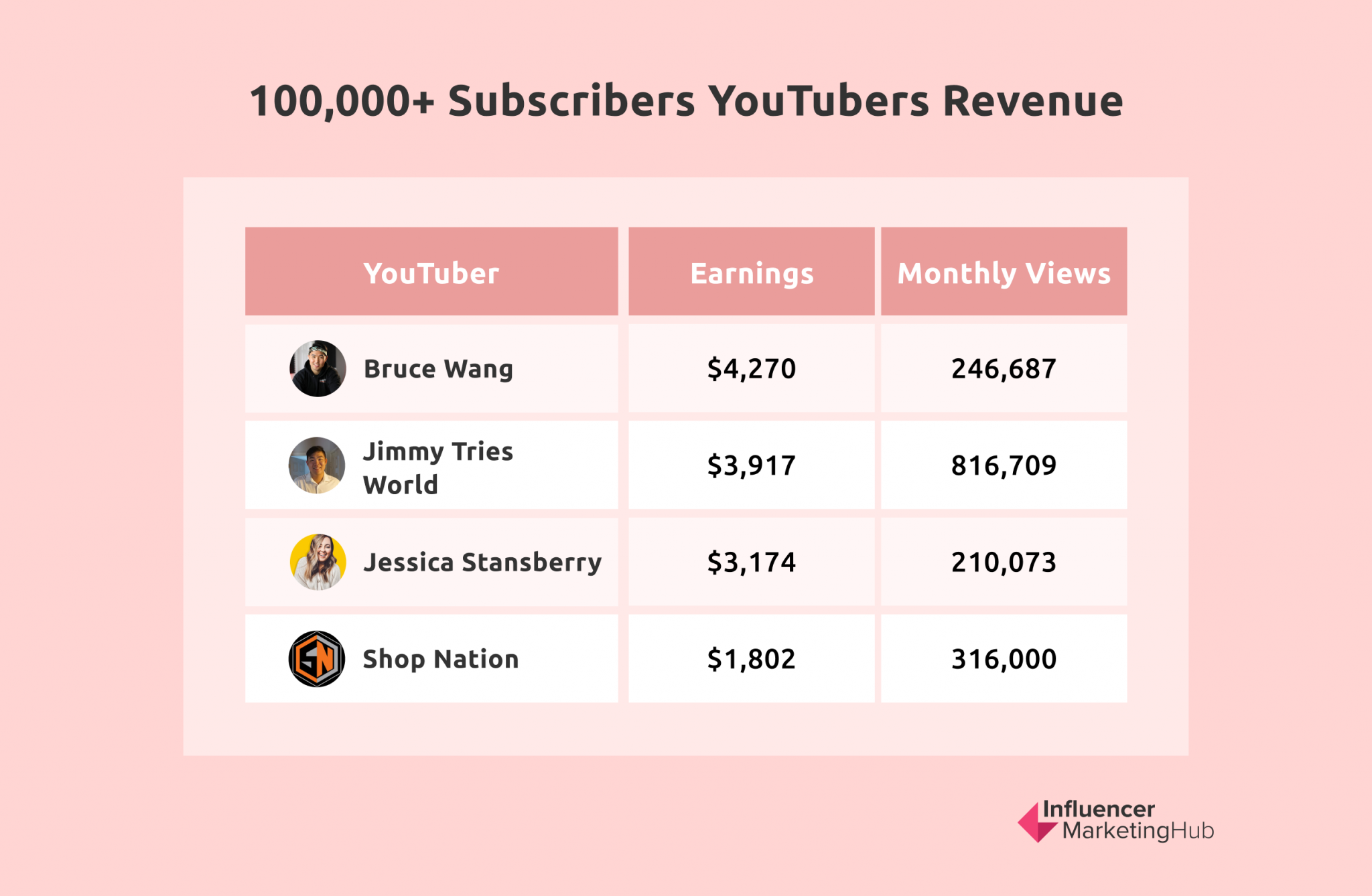Have you ever wondered how much money a YouTube channel can make from billions of views? It’s a fascinating topic that blends creativity, business acumen, and a little bit of luck. With more than 2 billion logged-in users each month, YouTube is undoubtedly one of the largest platforms for content creators. Those 13 billion views may sound overwhelming, but let’s break down what they truly mean in terms of revenue generation. Spoiler alert: it’s not just about ad revenue!
Understanding YouTube Monetization Strategies

To fully grasp how revenue is generated from YouTube, it’s essential to understand the different monetization strategies available to creators. Let’s dive into some of the most popular methods:
- Ad Revenue: This is the most common way YouTube creators earn money. When you enable ads on your videos, you can earn money through:
- CPM (Cost Per Mille): Creators earn money for every 1,000 ad views. The CPM rate varies widely, typically ranging from $0.25 to $4.00 depending on the niche, audience demographics, and time of year.
- CPC (Cost Per Click): This method pays creators when viewers click on the ads displayed in their videos. It can be more lucrative in specific markets and niches.
- Channel Memberships: Once a channel reaches a certain threshold of subscribers, they can offer memberships. Fans can support their favorite creators financially in exchange for perks like exclusive badges, emojis, and content.
- Super Chat and Super Stickers: During live streams, viewers can pay to have their messages highlighted or send fun stickers. This not only acts as an income source but also enhances engagement with the audience.
- Merchandise Shelf: Creators can promote their own products or branded merchandise directly through their YouTube channel. This is particularly effective for channels with a dedicated fanbase and strong branding.
- Affiliate Marketing: By partnering with brands, creators can earn commissions on products sold through their referral links. This strategy is particularly common in niches like beauty, tech, and lifestyle.
- Sponsored Content: Some creators collaborate with brands to create videos that feature products or services. Brands pay for this exposure, often resulting in high revenue for the creator.
Considering a channel with 13 billion views, let’s run some hypothetical numbers. Assuming an average CPM of $2 (a conservative estimate), the channel could generate around $26 million just from ad revenue alone. But remember, that's just one way of earning!
Let’s look at other income sources. If the creators have built a loyal community, channel memberships could add another substantial revenue stream. Say 1% of viewers opt for a membership at $5 per month; that could mean an additional annual income of $780,000.
With diverse strategies like merchandise sales and sponsorships, the revenue potential expands even further. If, for instance, a creator engages in three sponsorships a month, earning about $10,000 each, that pushes the annual earnings into the multi-million dollar range.
In summary, estimating revenue from a staggering 13 billion views on YouTube showcases not only the power of ad revenue but also emphasizes how diversified monetization strategies can significantly contribute to a creator’s financial success. The key takeaway? Embrace a multifaceted approach to content creation and monetization!
Also Read This: Finding Full Episodes of ‘Are You Being Served?’ on YouTube
3. Factors Influencing Revenue from YouTube Views

When it comes to estimating revenue from YouTube views, it's important to recognize that not all views are created equal. Several key factors play a significant role in determining how much money a creator can actually earn. Let’s break down these factors:
- Geographic Location: The country where the views are coming from can dramatically affect earnings. For instance, views from countries like the United States, Canada, and the United Kingdom generally bring in higher revenue than views from developing countries. This is largely due to differences in advertising rates and market demand.
- Viewer Engagement: The level of engagement that viewers have with a video impacts revenue. This includes likes, comments, shares, and overall watch time. Higher engagement usually translates to better ad performance, making advertisers more willing to pay for ad placements.
- Ad Formats: YouTube offers various ad formats—think skippable ads, non-skippable ads, bumper ads, and overlay ads. Each format has different earning potentials. For example, non-skippable ads typically generate more revenue because viewers must watch them in their entirety.
- Content Niches: The topic or niche of the video plays a crucial role. Some niches, like finance or technology, tend to attract higher-paying ads due to the lucrative nature of the industry. On the flip side, entertainment or lifestyle channels may earn less per view.
- Seasonality and Trends: Revenue can fluctuate throughout the year based on seasonal trends. For example, advertising budgets may increase around the holidays, resulting in higher CPM rates. Creators who align their content with seasonal events may benefit significantly.
- Channel Size and Reputation: A channel with a large subscriber base and a strong reputation is likely to attract better advertising deals. Larger channels have more bargaining power when it comes to partnerships and sponsorships.
Understanding these factors can help creators tailor their content and strategies to maximize revenue. Remember, it's not just about the number of views; it's about how effectively those views can be monetized!
Also Read This: How to Play YouTube in the Background on iPhone Without Premium
4. CPM (Cost Per Mille) Explained
CPM, or Cost Per Mille, refers to the amount advertisers pay per 1,000 ad impressions on YouTube. It’s a crucial metric that directly influences a creator's potential earnings. Let’s dive deeper into what CPM means and how it affects revenue.
At its core, CPM is a way for advertisers to measure the cost of running their ads. For example, if a video has a CPM of $10, that means advertisers pay $10 for every 1,000 times their ad is shown. Here are some important aspects to consider regarding CPM:
- Variability: CPM rates can fluctuate widely depending on the factors discussed earlier. Advertisers may set higher CPM rates for certain demographics or during peak advertising seasons.
- Bid Strategy: Some advertisers use competitive bidding strategies for ad placements. This can lead to increased CPM rates as advertisers are willing to pay more to secure a spot on popular videos.
- Ad Relevance: How relevant an ad is to a video's content can impact CPM. Relevant ads generally perform better, leading to higher CPM as advertisers see a better return on investment.
- Audience Characteristics: The makeup of a channel's audience—age, gender, interests—will influence the CPM rates. Advertisers are more likely to pay higher CPMs if they believe the audience aligns with their target demographic.
To sum up, understanding CPM is vital for YouTube creators looking to maximize their earnings. By analyzing the various influences on CPM, creators can better strategize their content and ad placements, ultimately boosting their revenue potential.
Also Read This: How to Download 4K Videos from YouTube: Best Tools and Methods
5. Estimating Revenue from 13 Billion Views
Alright, let’s dive into some serious number crunching! When we talk about estimating revenue from YouTube views, it’s crucial to understand that it’s not a straightforward calculation. The first thing we need to consider is the YouTube monetization model. Most YouTubers earn money through AdSense, which means they get paid for displaying ads in their videos. However, this varies significantly based on several factors.
One of the primary metrics we often hear in the YouTube community is CPM, or cost per thousand impressions. This can fluctuate widely depending on the content type, audience demographics, and the time of year. For instance, during holiday seasons, CPM can skyrocket due to increased advertising budgets!
On average, CPM rates can range anywhere from $0.50 to $20+. A good ballpark figure for many content creators is around $2 to $5 per thousand views when accounting for different variables. So, let’s break this down:
- If we assume a conservative average CPM of $3:
- For 13 billion views, you would calculate:
| Views | CPM | Estimated Revenue |
|---|---|---|
| 13,000,000,000 | $3 | $39,000,000 |
So, in this scenario, a channel could potentially generate around $39 million just from ad impressions. However, this is still just the tip of the iceberg! YouTube also offers various other revenue streams, such as:
- Channel memberships – Subscribers pay a monthly fee for exclusive content.
- Super Chat – Viewers pay to have their messages highlighted during live streams.
- Sponsorships – Brands may pay content creators directly to promote their products.
- Merchandise sales – Many successful YouTubers create and sell their own merch.
When all these additional revenue sources are factored in, the estimated revenue from 13 billion views can surpass even the most optimistic predictions. In short, if you're thinking of monetizing on YouTube, there's certainly a goldmine out there—if you play your cards right!
Also Read This: How to Get Past the YouTube Ad Blocker and Enjoy Your Favorite Content
6. Case Studies of Successful YouTube Channels
Now that we've wrapped our heads around the numbers, how about we take a look at some real-life examples of successful YouTube channels? These case studies can give us a glimpse into what strategies are working and how revenue can skyrocket with the right approach.
1. MrBeast
MrBeast, also known as Jimmy Donaldson, is renowned for his extravagant videos—think giving away cars or throwing massive cash giveaways. As of my last update, he boasts billions of views and millions of subscribers. His channel's success can largely be attributed to:
- High-quality content that keeps viewers engaged.
- Strong social media presence that builds community and hype.
- Collaborations with other influencers to broaden his audience.
MrBeast’s revenue streams are diversified, including merchandise and sponsorships, often leading to millions in annual income.
2. Dude Perfect
This channel, dedicated to sports and trick shots, has managed to capture the attention of viewers across all age groups. What sets Dude Perfect apart includes:
- Creative concepts that resonate with sports fans.
- Engaging family-friendly content.
- Strong partnerships with brands, increasing their CPM and sponsorship potential.
With an audience that numerically spans globally, Dude Perfect showcases how creating a niche can lead to staggering revenue.
3. T-Series
Moving to the realm of music, T-Series is one of the most subscribed channels on YouTube. They accumulate views astronomically due to:
- Uploading a large volume of content—new music videos, trailers, and more.
- Tailoring content based on popular demand in India and abroad, maximizing viewership.
T-Series exemplifies how tapping into regional markets can lead to significant revenue generation.
Each of these channels has found success through a mix of creativity, strategic planning, and audience engagement. They show that with the right content and marketing strategies, it’s entirely feasible to make serious money on YouTube!
Also Read This: Have YouTube Ads Gotten Worse? Analyzing Changes in Ad Frequency and Quality
The Impact of Ad Formats on Revenue
When it comes to monetizing content, YouTube offers a variety of ad formats that can significantly influence overall revenue. Understanding how these formats work can help content creators strategize effectively for maximizing earnings from their views.
Here are some of the most common types of ads on YouTube:
- Display Ads: These appear on the right-hand sidebar while videos are playing. They can be a great source of passive income since they’re visible to all viewers, regardless of whether they interact with them.
- Overlay Ads: Semi-transparent ads that appear on the lower part of the video. They’re less intrusive but provide a unique opportunity for viewers to click through without stopping the video.
- Skippable Video Ads: Play before or during the video and can be skipped after five seconds. Creators earn more from these because viewers often watch until they can skip.
- Non-skippable Video Ads: Must be watched in full before the content plays. They command a higher CPM (cost per thousand impressions) since they guarantee viewers will see the content, but they can deter audience retention.
- Bumper Ads: Short, non-skippable ads that last up to 6 seconds. These are highly effective in creating brand awareness in a brief format.
- Sponsored Cards: These highlight products used in the video. While they don’t directly generate ad revenue, they can lead to increased sales, benefiting both creators and sponsors.
Each format has its unique characteristics that can affect viewer experience and engagement. For instance, a high number of skippable ads might lead to viewer frustration, which could reduce watch time—an essential factor for YouTube’s algorithm and, consequently, revenue. On the flip side, non-skippable ads can annoy viewers but provide higher earnings per ad view.
As we analyze the potential revenue from 13 billion views, the mix of ad types that a channel employs will heavily dictate overall revenue. Channels that strike a balance between viewer satisfaction and revenue generation typically perform better in the long run. Thus, understanding audience behavior and preferences is key to selecting the right ad formats.
Also Read This: Is Hulu Better Than YouTube TV? Comparing the Two Streaming Services in 2024
Alternative Revenue Streams for YouTubers
While ad revenue is a significant source of income for YouTubers, relying solely on YouTube’s ad program can be limiting. As many creators have discovered, diversifying revenue streams can significantly increase overall income and provide more financial stability. Here are some popular alternative monetization methods:
- Merchandise Sales: Many creators leverage their brand by selling branded merchandise, such as T-shirts, mugs, or other products. Platforms like Teespring or Merch by Amazon make it easy to design and sell custom products.
- Memberships and Patreon: Platforms like Patreon enable viewers to support creators directly in exchange for exclusive content or perks. Offering membership benefits can turn casual viewers into loyal supporters.
- Sponsorships: Partnering with brands for sponsorship deals can provide substantial revenue. This usually involves creating content that features the brand, products, or services, tailored to align with the creator's audience.
- Affiliate Marketing: By promoting products with affiliate links, YouTube creators can earn commissions if viewers make a purchase through those links. This method works well in niches like beauty, tech, or fitness.
- Online Courses and Workshops: Creators with expertise in specific areas can develop and sell online courses or conduct workshops, providing value to their audience while generating income.
Embracing these alternative revenue streams not only helps YouTubers maximize their income potential but also fosters a closer connection with their audience. Viewers tend to appreciate when a creator offers them exclusive insights, products, or experiences, enhancing community engagement and loyalty.
In conclusion, by diversifying income sources and leveraging various platforms, YouTubers can buffer against fluctuations in advertising revenue, especially in an ever-evolving digital landscape.
Conclusion: The Future of YouTube Revenue
As the landscape of digital media continues to evolve, the potential for revenue generation on YouTube remains promising. With *13 billion views*, the opportunities for monetizing content are becoming increasingly sophisticated. Here are some key factors influencing the future of YouTube revenue:
- Diversification of Income Sources: Creators are exploring various revenue streams beyond ad revenue, such as:
- Brand partnerships
- Merchandising
- Subscription services (e.g., channel memberships)
- Crowdfunding through platforms like Patreon
- Increased Focus on Short-Form Content: With the rise of YouTube Shorts, which mimic the success of platforms like TikTok, creators are finding new ways to engage audiences and generate revenue through:
- Shorter ad formats
- Increased viewer retention
- Global Expansion: As YouTube continues to grow in emerging markets, there are vast opportunities for creators to monetize content in different languages and cultures.
- Enhanced AI and Analytics: Advanced analytics tools are allowing creators to better understand their audience and optimize content to maximize engagement and revenue.
In conclusion, while estimating revenue from a staggering 13 billion views presents challenges, the future of YouTube revenue is bright. By leveraging diverse income sources, adapting to content trends, and utilizing analytics, creators can unlock the full potential of their platforms. This evolution not only benefits creators but also enriches the viewer experience as content becomes more tailored and engaging.
 admin
admin








